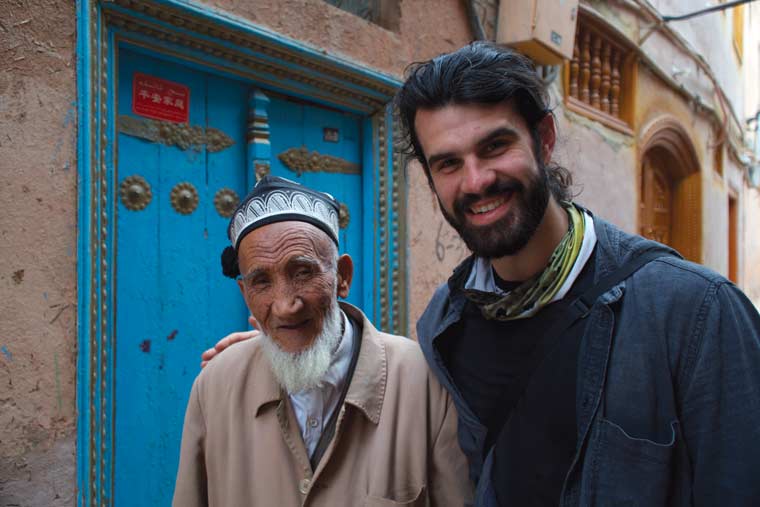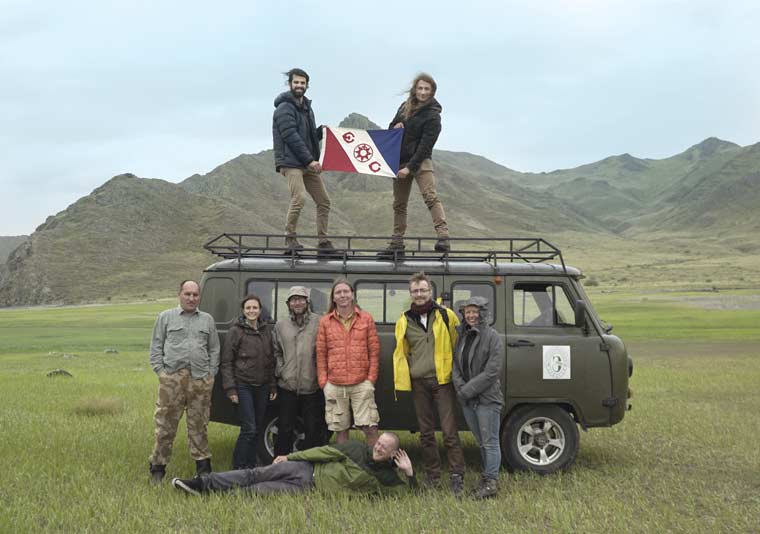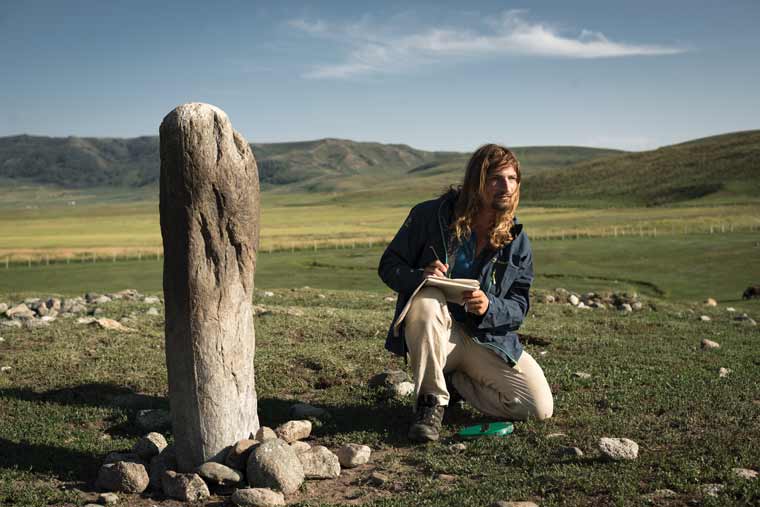Trevor Wallace ’13 was not surprised when he got arrested in Xinjiang, China, in the fall of 2016.

Before he set out to find 2,500-year-old burial tombs and make a feature documentary, his colleague, Swiss archaeologist Gino Caspari, told him casually, “We’re probably going to be arrested at some point.”
They had been walking and hitchhiking in a remote area close to the border of Kazakhstan for two weeks when Chinese border guards on motorcycles suddenly appeared and circled them. Wallace and Caspari—who had met years earlier at the legendary Explorers Club, an organization dedicated to scientific exploration around the globe—feigned ignorance. The guards released them the next day, after accepting Clif Bars as gifts and introducing them to a local wrestler.
Wallace and Caspari charmed their way around many an obstacle in pursuit of their goal: locating an unlooted royal tomb to learn more about nomadic horse lords, known as the Scythians, who ruled Eurasia two millennia before Genghis Khan. (They would later go undercover to trace the supply chain of looted antiquities on the black market in Hong Kong.) Although Wallace taught geography and ancient history at a middle school in Boston after graduating from Sarah Lawrence, even he had barely heard of the Scythians. “A lot of people would think there isn’t much left to discover,” he says. “We’ve mapped the whole globe. We’ve been on the top of Mount Everest, we’ve been to the bottom of Marianas Trench, we’ve been to the moon, so what is there left to explore?” The burial chambers of mummified Scythians preserved under a layer of permafrost might be one answer to that question.

The year following the night in jail, Caspari used high-resolution satellite images and old Soviet treasure maps to locate what appeared to be an undisturbed burial mound deep in a southern Siberian swamp. The mound was patchy with grass and heavy stones arranged in a circular pattern stretching 150 meters in diameter—easy to miss, unless it is exactly what you’re looking for. With permits from the Russian government, a tractor to traverse the swamp, and a small team from the Hermitage Museum and the Russian Academy of Sciences, Wallace and Caspari unearthed pieces of a wooden beam, which carbon dates to the ninth century BCE. The tomb is the oldest and largest of the Scythians’ ever documented.

Wallace got all of it on film, and after spending the summer sleeping in tents and meticulously excavating more of the tomb, he and Caspari will premiere Frozen Corpses Golden Treasures this fall. (Wallace has been courted by several networks and studios and aims to enter the film in the festival circuit in the coming year.) In March 2018, at the 114th Explorers Club Annual Dinner, they were jointly bestowed with The New Explorer Award, following presentations to astronaut James A. Lovell and Amazon founder Jeff Bezos.
Why is it important to explore, to go beyond what we know? Wallace quotes John Glenn, the first American to orbit Earth, who described exploration as “curiosity in action.” After expeditions across the planet, including both the North and South Poles, Wallace believes asking questions and chasing the answers is the antidote to much of what ails humanity today. A bit of a nomad himself, he relates to the Scythians, who refused to settle in one place. “Through exploration, you can simultaneously break down barriers and create appreciation for things that are totally different,” Wallace emphasizes. “That’s what gives my life meaning.”
Written by Katharine Reece MFA ’12